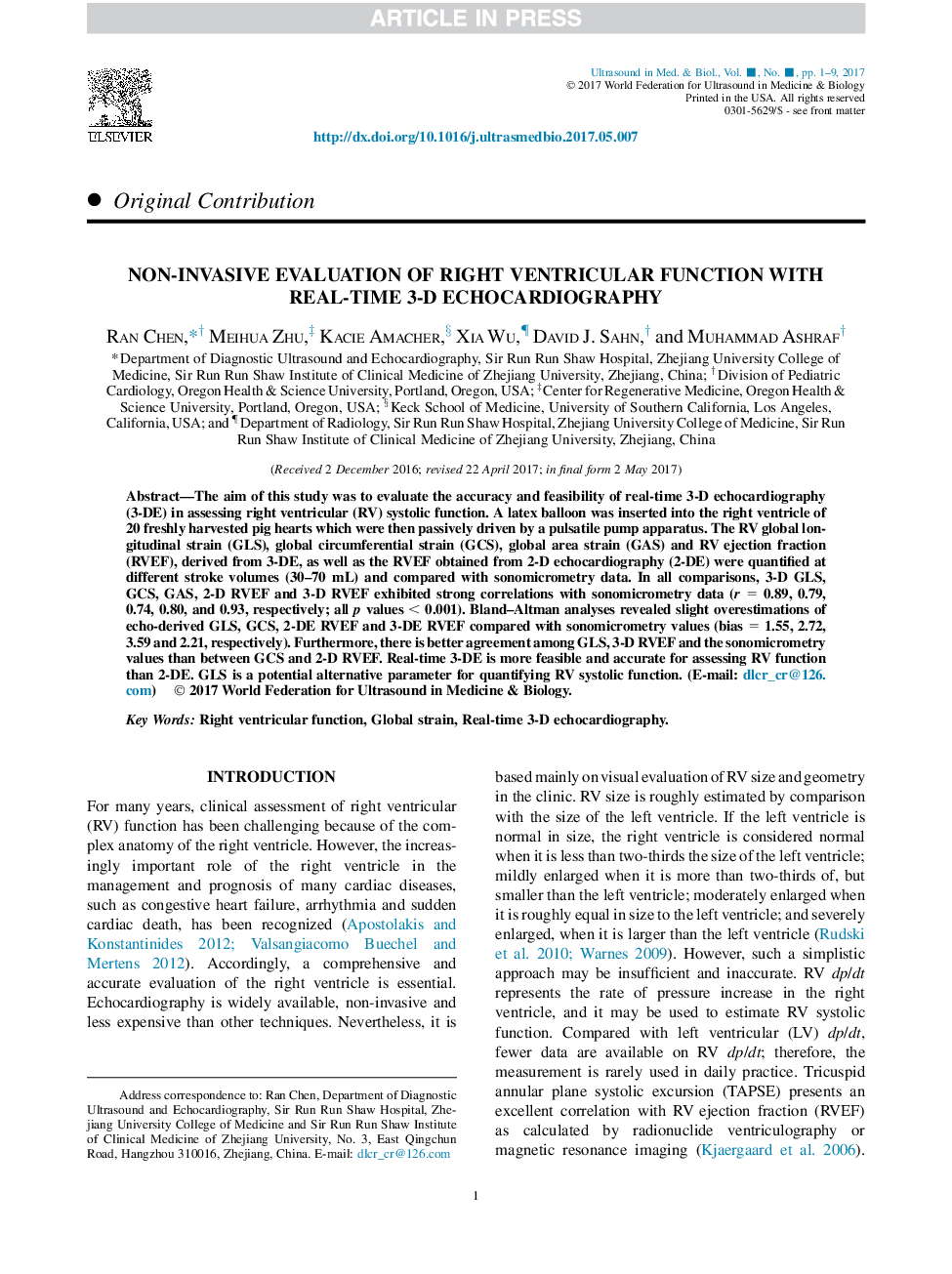| Article ID | Journal | Published Year | Pages | File Type |
|---|---|---|---|---|
| 5485561 | Ultrasound in Medicine & Biology | 2017 | 9 Pages |
Abstract
The aim of this study was to evaluate the accuracy and feasibility of real-time 3-D echocardiography (3-DE) in assessing right ventricular (RV) systolic function. A latex balloon was inserted into the right ventricle of 20 freshly harvested pig hearts which were then passively driven by a pulsatile pump apparatus. The RV global longitudinal strain (GLS), global circumferential strain (GCS), global area strain (GAS) and RV ejection fraction (RVEF), derived from 3-DE, as well as the RVEF obtained from 2-D echocardiography (2-DE) were quantified at different stroke volumes (30-70 mL) and compared with sonomicrometry data. In all comparisons, 3-D GLS, GCS, GAS, 2-D RVEF and 3-D RVEF exhibited strong correlations with sonomicrometry data (r = 0.89, 0.79, 0.74, 0.80, and 0.93, respectively; all p values < 0.001). Bland-Altman analyses revealed slight overestimations of echo-derived GLS, GCS, 2-DE RVEF and 3-DE RVEF compared with sonomicrometry values (bias = 1.55, 2.72, 3.59 and 2.21, respectively). Furthermore, there is better agreement among GLS, 3-D RVEF and the sonomicrometry values than between GCS and 2-D RVEF. Real-time 3-DE is more feasible and accurate for assessing RV function than 2-DE. GLS is a potential alternative parameter for quantifying RV systolic function.
Related Topics
Physical Sciences and Engineering
Physics and Astronomy
Acoustics and Ultrasonics
Authors
Ran Chen, Meihua Zhu, Kacie Amacher, Xia Wu, David J. Sahn, Muhammad Ashraf,
